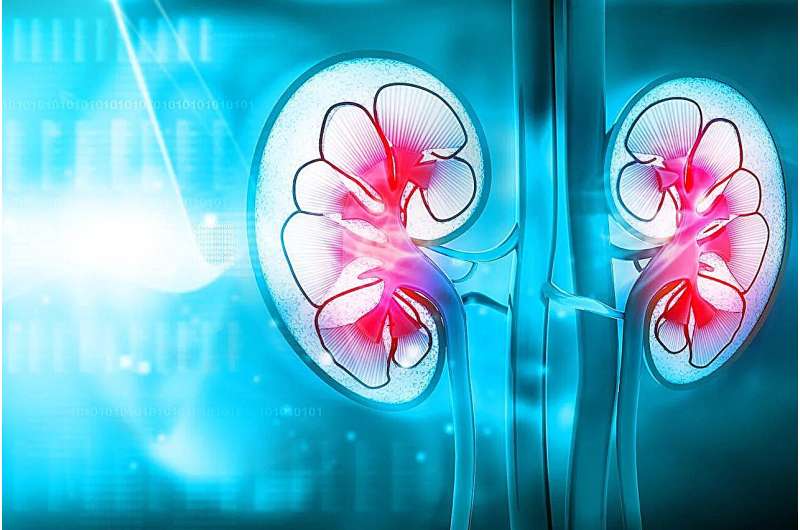Evaluating Risks of Benson's Blend for Kidney Patients
For decades, Benson's salt substitute has allowed people restricting sodium to still enjoy the flavor of salt. But with high potassium levels, is it a safe swap for those with chronic kidney disease (CKD)?
The Low-Sodium Appeal of Benson's
Benson's salty blend was created in 1983 by George Benson, a scientist frustrated with bland low-sodium foods. By using potassium chloride instead of more sodium chloride salt, Benson developed a salt alternative allowing salt-sensitive individuals to spice up meals.
The FDA may soon allow potassium chloride mixtures like Bensons to be added directly into more packaged foods. This could make limiting salt intake easier for many Americans. But there are concerns for the 30 million plus suffering from various stages of CKD.
Why Kidney Disease Alters Mineral Needs
Healthy kidneys filter excess fluid and waste from the blood while retaining beneficial compounds like protein, glucose and electrolytes in balance. But CKD causes crucial minerals to be lost abnormally in urine output.
As kidney function worsens over time, recommendation emerge to cut back on intake of sodium and boost levels of nutrients like potassium that are chronically low due to poor filtration. However this can become a complex tightrope walk.
Evaluating Potassium Chloride Content
The great majority of potassium in the body lies inside heart, muscle and other soft tissue cells. Having adequate steady reserves allows nerves to fire, the heart to beat properly, and waste balance. But altering potassium too quickly or severely either way impacts these vital jobs.
FDA Rule Sparks Pushback
The FDA recently proposed allowing potassium chloride mixtures like Bensons salt substitute to be directly added into more packaged foods Americans buy at the grocery store. This could make limiting dietary sodium easier for salt-sensitive individuals trying to control conditions like high blood pressure.
But there are concerns for the over 30 million suffering from various stages of chronic kidney disease (CKD). For these individuals, having too much potassium can also cause severe health impacts.
Risk of Hyperkalemia Emerges
In advanced CKD, compromised kidneys struggle eliminating excess potassium absorbed from food and supplements. As levels creep too high, a condition called hyperkalemia results.
Early warning signs like tingling skin or digestive upset may occur. But potassium rising too much further can cause fatal heart rhythm abnormalities. This risk escalates for those also taking common blood pressure medications alongside CKD.
Navigating Salt Needs with Kidney Decline
Balancing sodium and potassium input alongside kidney function decline becomes an intricate dance. Guidance emerges to restrict the first while boosting the second - yet both can readily swing too far in either direction.
Sodium Sparingly, With Caution
Since the kidneys handle excess sodium by removing it through urine, impaired filters cause recommendation to limit daily salt intake to 2000-3000 mg depending on lab values and overall status. Reading labels to avoid hidden sources helps control intake.
Yet cutting back too extremely stresses the balance between sodium and potassium in the body. Additionally, aggressive restrictions may not improve blood pressure or other CKD symptoms enough to merit challenges adhering long-term.
Potassium Carefully, With Consideration
Meanwhile, decreasing kidney function means absorbing enough potassium from food becomes trickier. Limits ranging from 2000-4000 mg daily depending on lab work may be suggested to prevent levels from dropping too low.
Yet the primary danger is rising potassium. Patients need routine monitoring and may suddenly require restricting or supplementing if reserves shift. Prescriber guidance is key in navigating these fluid needs.
Weigh Your Options Thoughtfully
In managing sodium and potassium balance alongside declining kidney health, no one size fully fits all. Work closely with your nephrologist, primary care doctor and dietitian to develop a unique plan aligned with your changing status and needs.
While salty substitutes like Bensons blend can help restrict sodium, closely monitor resulting potassium fluctuations. Ensure you understand warning signs of hyperkalemia and when to adjust intake levels either way. Empowerment through knowledge is key!
Disclaimer: This article is for informational purposes only and does not constitute medical advice. Always consult with a healthcare professional before starting any new treatment regimen.
Related Coverage
Follow this Tarpeyo dosage guide to manage IgA nephropathy effectively. Learn how to take Tarpeyo correctly for better kidney health....
Choosing suitable protein bars helps dialysis patients meet daily protein intake needs safely. Learn how to evaluate labels for nutrition & avoid unsafe ingredients...
Kidney failure dehydration can cause acute kidney injury. Find key signs, treatment steps, and prevention tips....
Chronic kidney disease may increase tooth loss risk due to inflammation, dry mouth, and weakened bones. Protect your oral and kidney health today....
Potatoes are healthy when prepared properly. These 7 tasty recipes allow you to enjoy the vitamins, minerals, antioxidants of potatoes in nutritious baked, roasted dishes....
Explore effective C3G treatment options to manage C3 glomerulopathy and protect your kidney health with proven therapies....
PKD belly refers to the severely enlarged abdomen caused by polycystic kidney disease. Learn what causes it, see pictures, and discover ways to potentially slow progression....
Explore effective kidney failure treatment options beyond dialysis, including transplant and conservative care. Find what works for you....
A 2-day kidney cleanse plan with tips, risks, and benefits. Discover foods, drinks, and expert advice for better kidney health....
Learn about dialysis initiation CKD, including when to start, risks of late starts, and planning options to avoid emergencies....









